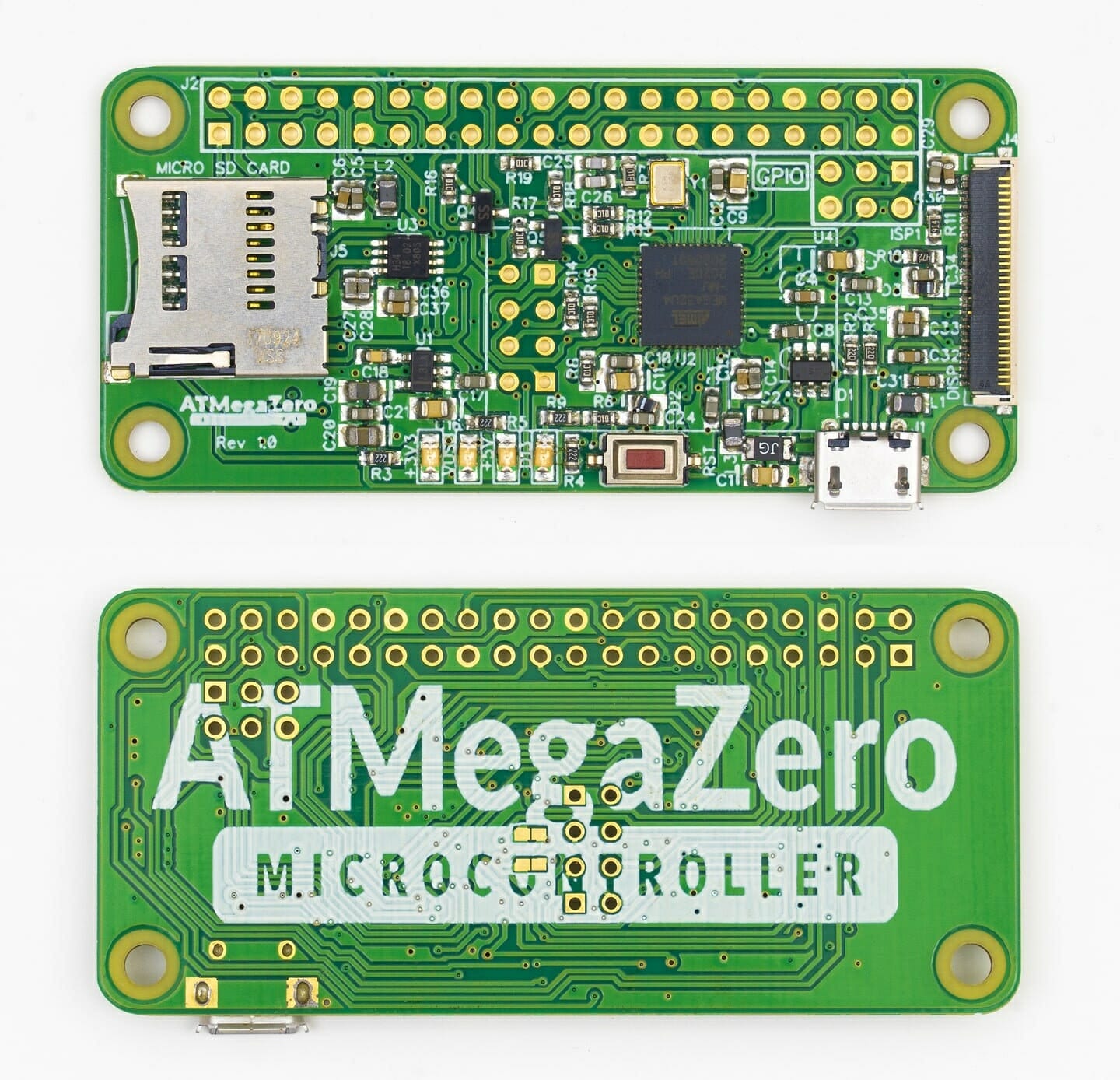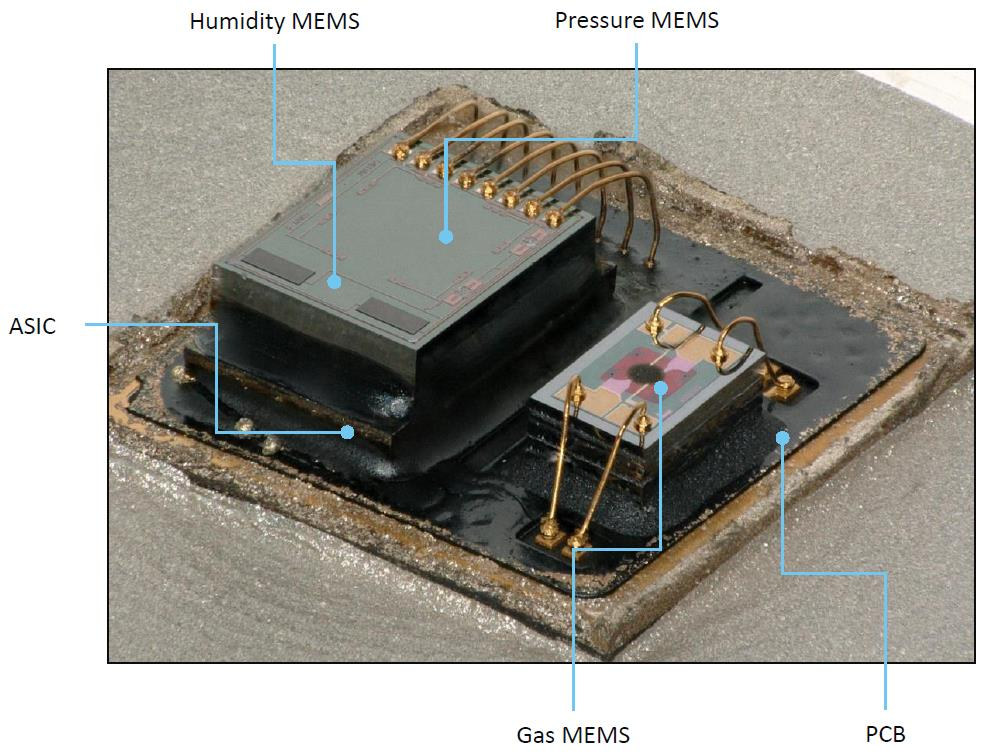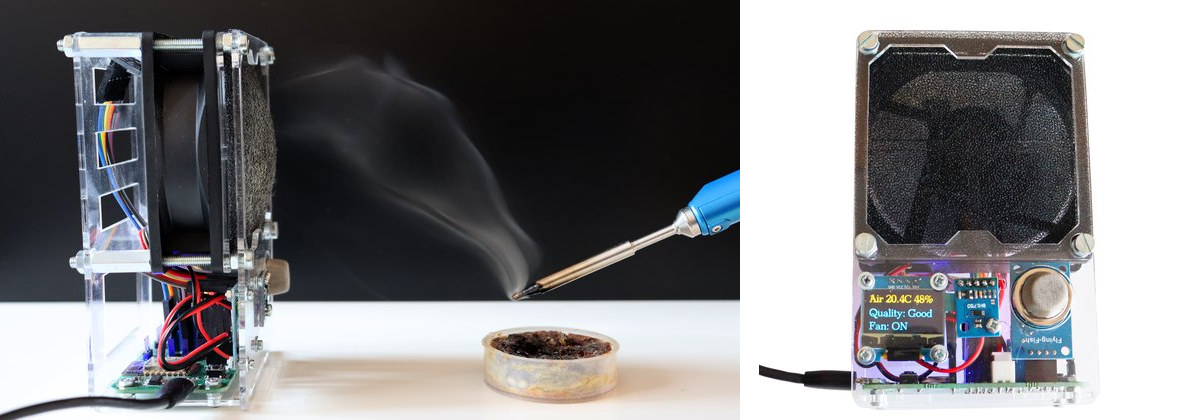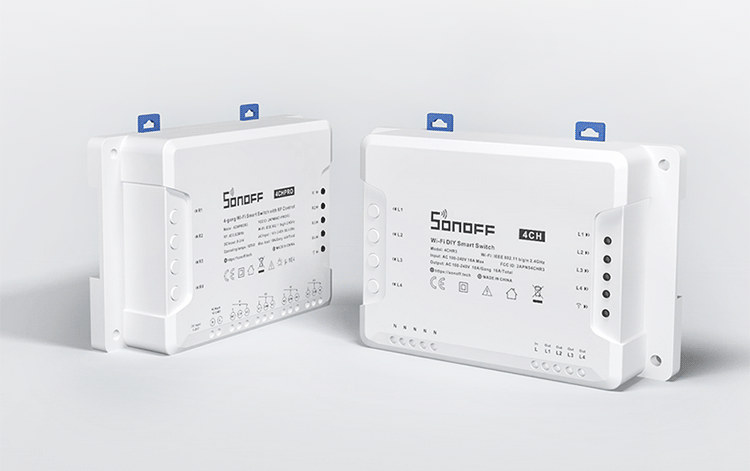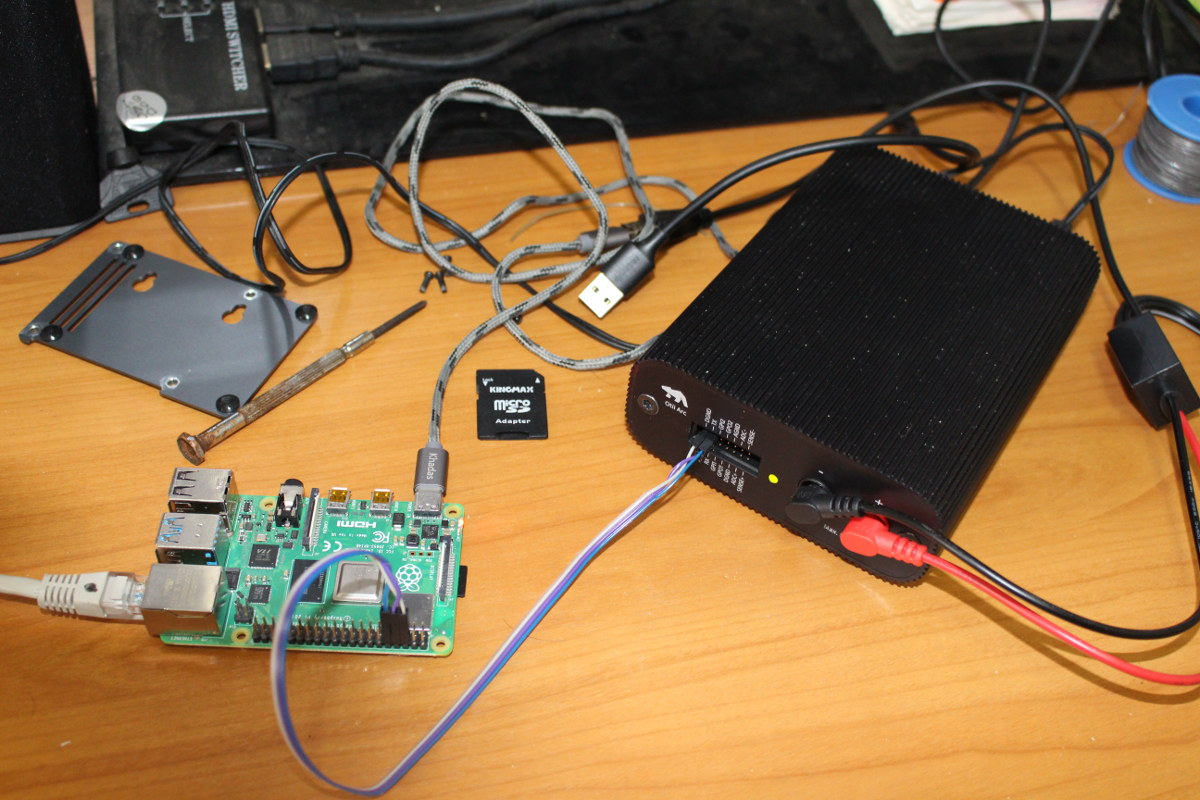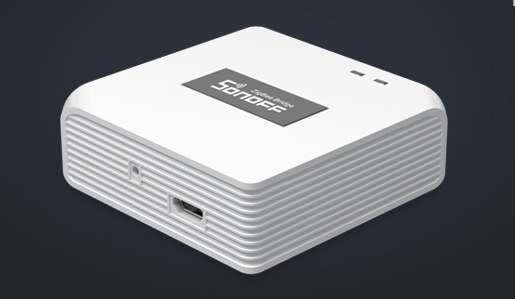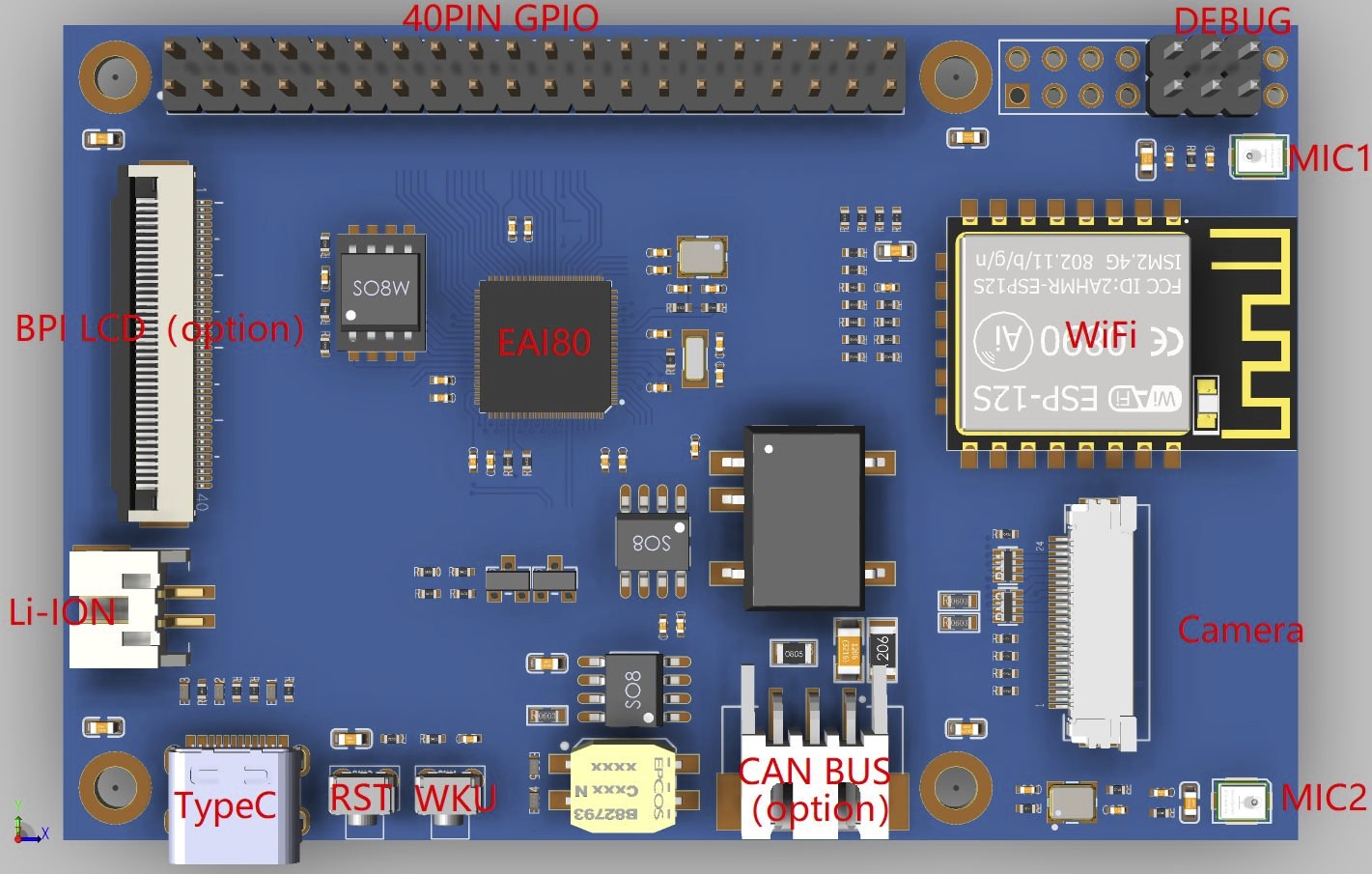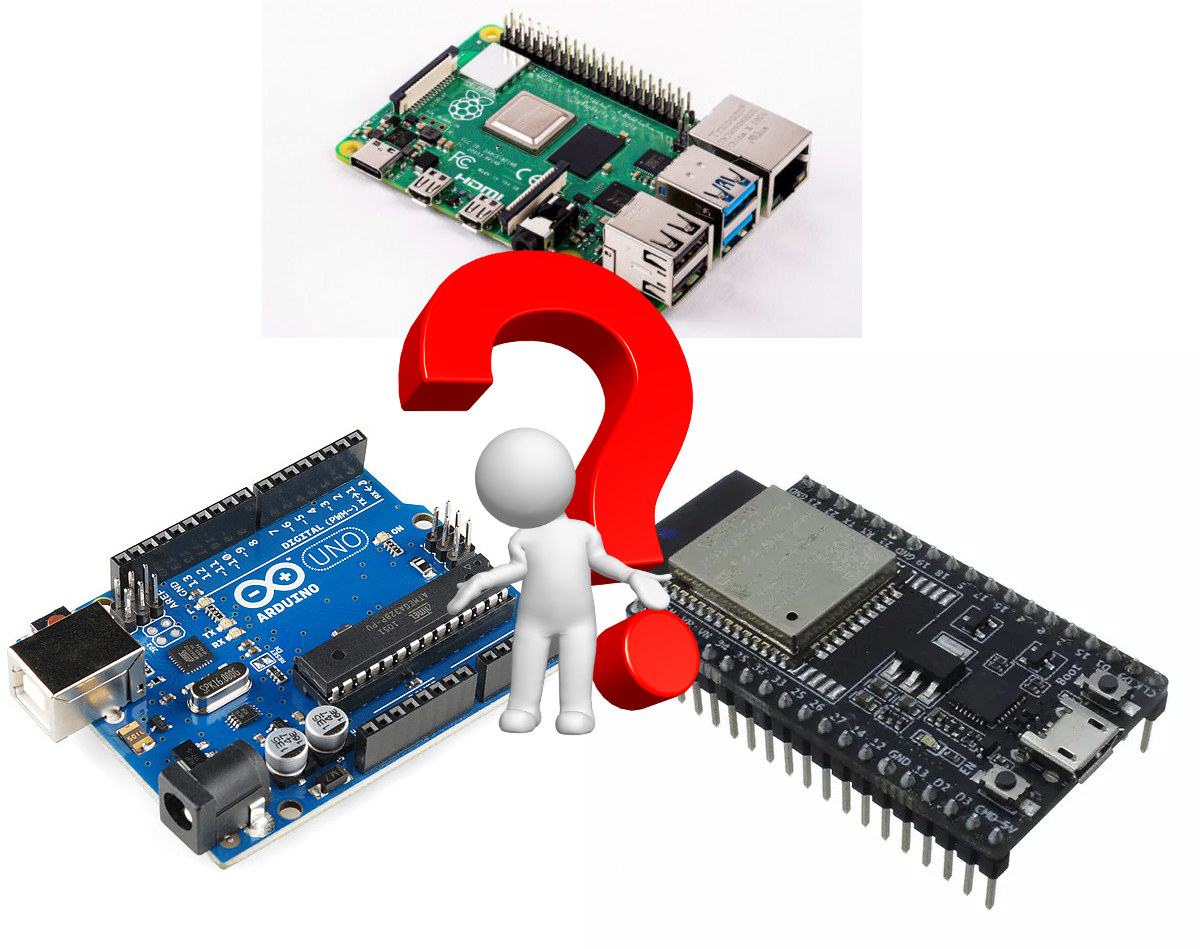When we reported about ATMegaZero, an Arduino Leonardo compatible board following Raspberry Pi Zero form factor last July it was not available for sale just yet. The good news is that the Microchip ATmega32U4 board is now available on GroupGets for $24.99 plus shipping. The group buying campaign is expected to end around September 30th, and the boards will ship right after that. Here’s a reminder about ATMegaZero specifications: MCU – Microchip ATmega32U4 microcontroller running at 16MHz with 32KB Flash, 2.5KB SRAM, 1KB EEPROM (Arduino Leonardo compatible) Storage – MicroSD card Display – 32-pin OLED display port compatible with 30-pin SSD1306 and SSD1331 based displays Wireless Connectivity – 8-pin header for optional ESP8266 ESP-01(s) WiFi module Expansion – 40-pin Raspberry Pi-inspired GPIO header with UART, SPI, I2C, analog input signals Debugging & Programming – Micro USB port, 6-pin ICSP header Misc – 4x LEDs, reset push-button Power Supply – 5V […]
ESPurna ESP8266 Automation Firmware Gets Support for BME680 Sensor’s Precise Indoor Air Quality Measurements
Bosch BME680 is a 4-in-1 air quality sensor measuring relative humidity, barometric pressure, ambient temperature, and gas (VOC) levels. It’s found in boards such as STM32 based Metriful Sense or Nordic Thingy:91, and Bosch Sensortec published an Arduino library based on “Bosch Sensortec Environmental Cluster (BSEC) Software” to provide precise calculations temperature, humidity, pressure, and indoor air quality (IAQ). BSEC proprietary algorithms can provide indoor air quality data as good as more expensive CO2 sensors according to a recent presentation by the company. Max Prokhorov, lead ESPurna maintainer, and Rui Marinho noticed none of the popular open-source ESP8266 automation firmware including ESPurna, Tasmota, and Esphome supported BME680 sensor just yet. So they decided to work together to add BME680 sensor support via BSEC library to ESPurna firmware, and now it’s very easy to use as you just need to define BME680_SUPPORT=1 before compiling the firmware. You’ll find the now-merged pull […]
ANAVI Fume Extractor Comes with ESP8266 WiSoC, MQ-135 Gas Sensor (Crowdfunding)
Last year, I played with ESP8266 based ANAVI Gas Detector Starter Kit reporting air quality via an MQ135 sensor on an OLED display, and integrated it with Home Assitant to monitor air quality from a neat web dashboard. The developer, Leon ANAVI, has now adapted the design to create ANAVI Fume Extractor by basically adding a relay to control a control. The fan can be turned on/off manually, or automatically upon detecting bad air quality. ANAVI Fume Extractor key features and specifications: Fan – 80 mm, 5 V DC, 0.25 A with replaceable filter SoC – ESP8266 Tensilica L106 32-bit wireless processor Connectivity – 802.11 b/g/n Wi-Fi 4 Display – Mini OLED display Sensors – Optional MQ-135 for air quality or any other 5V MQ analog gas sensor Expansion – 3x headers for I²C sensors Debugging / Programming – UART pins for flashing custom firmware, Misc – Button, WiFi on/off […]
Sonoff 4CHR3 is a 4-gang Wi-Fi Smart Switch with optional RF433 Connectivity
ITEAD Studio introduced Sonoff 4CH 4-gang WiFi + RF switch in 2017 with a DIN rail enclosure, compatible with eWelink Android/iOS app, and offering three modes of operations selectable from physical switches on the unit: Self-locking mode – Each relay can be turn on and off independently. Interlock mode – Only one of the relay can be turned on at a given time. For example if R1 is on, and your press R2 to turn it on, R1 will automatically turn off Inching mode – A button press on the unit, mobile app, or RF/WiFi remote control will turn on the relay for X seconds as defined by K6 “delay” switch within a 0.5 to 3600 seconds range. The company has now launched the similar SONOFF 4CHR3 4-gang WiFi switch and 4CHPROR3 model that adds 433MHz connectivity, with the main difference again the previous generation being the ability to select […]
Getting Started with Qoitech Otii Developer Tool using ESP8266 and Raspberry Pi 4 Boards
Last month, I received Qoitech Otii Arc power supply, power meter, and DAQ unit that aims at helping hardware and software engineers develop energy-efficient products. I’ve now had time to test the unit with an ESP8266 board and Raspberry Pi 4 SBC, so I’ll show how to get started and my overall experience with the hardware and program. Requirements and Initial Setup The unit takes a 9V power supply or micro USB adapter as power input, but power output is done through banana plugs. I did not have any cables with banana plugs so I bought one on eBay for about $5 shipped. This cable is really convenient with output to USB (female connector), crocodile clips, and hook clips. However, as we’ll see below it may not be suitable for all types of loads, and you may have to make your own with a higher rated cable. You’ll need to […]
Sonoff ZBBridge WiFi to Zigbee Gateway Launched for $16.90
Since the end of last year, ITEAD has introduced several Zigbee Sonoff products such as Sonoff Basic R3 Zigbee, but so far customers had to rely on third-party hardware for the gateway, and they very recently launched a CC2531 Zigbee USB dongle to ease the task. But now the company’s just-launched Sonoff ZBBridge WiFi to Zigbee gateway allows people to control compatible Zigbee devices using eWelink mobile app. Sonoff ZBBridge specifications: Wireless Connectivity – 2.4 GHz 802.11b/g/n WiFi 4 and Zigbee 3.0 Power Input – 5V/1A Dimensions – 62 x 62 x 20 mm (PC V0) Weight – 35 grams Temperature Range – -10 to 40°C The gateway is working with BASICZBR3 Smart Switch, S31 Lite zb Smart Plug, and the upcoming SNZB-01 Wireless Switch, SNZB-02 Temperature & humidity sensor, SNZB-03 motion sensor, and SNZB-04 wireless door/window sensor. It will also work with other smart devices certified by the ZigBee […]
Edgeless EAI-Series Dual Arm Cortex-M4 MCU Features a 300 GOPS CNN-NPU
Microcontrollers will have an important role to play in AIoT (AI + IoT) applications as they provide the lowest cost and power consumption. Performance is limited but we start seeing MCUs with AI accelerators such as GreenWaves GAP9 multi-core RISC-V microcontroller or Kendryte K210 RISC-V MCU with a KPU AI accelerator. Another option is by Edgeless Semiconductor Co. Ltd (零边界集成电路有限公司) based in Zhuhai, China, and more specifically its Edgeless EAI-Series dual-core Arm Cortex-M4 microcontrollers equipped with a 300 GOPS CNN NPU. Edgeless EAI specifications: CPU – Dual Arm Cortex-M4F @ up to 200Mhz, with DSP instructions, I/D cache for high performance; 500DMIPS/1.25DMIPS/MHz (Dhrystone2.1) AI Accelerator – CNN-NPU clocked at up to 300MHz with 300 GOPS peak throughput; 144MAC/cycle, EER up to 1TOPS/W, for image recognition scenario. Support major CNN Models including Resnet-18, Resnet-34, Vgg16, GoogleNet, Lenet, etc.. Support Convolutional kernel size 1~7 Support Channel/Feature No. up to 512 Support Max/Average […]
Know the Differences between Raspberry Pi, Arduino, and ESP8266/ESP32
CNXSoft: This is a guest post written in collaboration with SurfShark. When it comes to choosing a platform for STEM education or hobbyist projects, there are a number of low-cost, compact maker boards on the market. The most popular include the kid-friendly Raspberry Pi SBC that was designed with children in mind, Arduino boards for electronics projects, and more recently boards and modules based on EspressifESP8266 and ESP32 wireless SoC’s. In this post, we’ll look at the use cases and strong points for each of the boards whether you are just dabbling in the hobby of coding and DIY electronics, or you have a commercial project. Raspberry Pi The Raspberry Pi is a lineup of single-board computers (SBCs) that are from the UK and were first introduced in February 2012. These small computers were initially designed to teach students the basics of computer science, but they’ve found their way into […]


